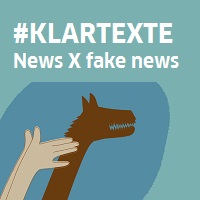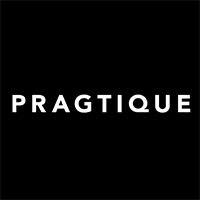
Interview: Israeli street artists Dede and Nitzan Mintz

Street Art in Tel Aviv is quite a phenomenom. So called Dolphinarium, giant animals and bandaids by Dede or street poems and texts by Nitzan Mintz are great part of the public space and form an open air gallery available for everyone who passes around. It is not only about marking the teritory, each work is born as a site specific and reflects the context of its environment and invites for an interaction.
This October, Dede and Nitzan came to Prague for a foreign artist residency in Petrohradská kolektiv. They stayed here over three weeks looking for a suitable place to work at. At the end they managed to create two large scale murals in Žižkov: "Ambitions" on Argo Publishing House (Milíčova 14) and "Objects" on Ponec Theatre (Husitská 24a). Additionally, they created also an indoor exhibition Hurdle for JednaDvaTri Gallery in Petrohradska. This interview was made in between.
How do you feel in Prague?
N: Now we have been here three weeks and I think we start to understand the city and the street art scene more. We already know Prague because we walk a lot by foot, every day around 10km, so now we already feel more at home.
Have you worked in another countries besides Prague? Was it different for you?
N: Yes, we have other works in London, Berlin, Paris, New York, Russia and recently in Poland. Each place is different. In most of those cities, there is a lot of murals and street art. Here in Prague you don't have a lot of these pieces. So here we feel... not like a pioneers, definitely not like a pioneers... but we didnt see any international paintings on the walls, so maybe - if I am correct - we are first international street artists here to paint large mural here. So for us it is a great honour.
How do you see art scene in Israel compare to here?
N: We have to separate the art scene from street art scene. We didnt have a chance to see many museums and exhibitions as I wanted so I don't know a lot about the art scene in Prague and I cant really compare between art scenes. I can talk about street art scene. In Israel, especially in Tel Aviv, we have very hectic and bubling street art scene, people are very active and create all the time. Here, you don't have a lot of steet artists. You have a very large and developed graffitti scene. Tel Aviv is not very strong in that. That would be the main difference for me.
What makes good street art?
N: Good street art in my eyes is an art that is connected to the area and history of the location. You don't do copy and paste between place to place without thinking what is your surroundings, what is the story, what are people like. For me the good piece is reflects all that. It is more connected to the area.
It is a way of communicating?
N: Yes, it is my favourite way of communicating. It also allows you to hide and not to show your face and not to be present and really speak with people. So it is a bit a coward way of communicating but on the other side it is a beautiful and even productive way.
D: It is a different way to communicate with people. Through your art, through your surroundings. It is just a format that is public, it can be shown to everyone without any curators or barriers, no censorship, no gallery or museum. You just put your piece outside and you communicate with the whole neighbourhood and all the people that walk around.
Do you feel you are activists? Is being activist part of your art work?
N: I never consider myself to be an activist or anything like that. But I am very active and I have my opinions and I do create with deep connection to my surroundings. Even if it is more hard core neighbourhood, especially when it is more hard core neighbourhood - very poor, with prostitutes and homelless people. Neighbourhoods that nobody cares about them and people live in a poor shape. Especially there I feel the need to communicate and to talk to the people through my art. But I do not call myself an activist.
Do you get feedback from the people on the street?
N: Yes. They come and some of them stop and try to read and ask the questions. And then we have a small talk or long talk, sometimes a very long talk. And even in the most poor and neglected neighbourhood you can find really amazing and very intelligent people that never read a book in their life and can give you very very interesting aproach to your piece. So for me it is very interesting.
How about when the feedback is that your work is erased or painted over?
D: I feel that every action that I made people to do through my paintings or through my works is special. I mean, I made someone to react and to think about my painting and to do something. And it is just the way how things are. The pieces stay dynamic. It is changing, it is erasing, it is falling apart and then you come and you do something new, something else, something better.
You just finished large mural in Zizkov, what does it mean for you?
N: First, the wall was an amazing opportunity for us to create something that big in Prague, in this scale. It is a big wall and we were very lucky to find this wall. It belongs to Argo Publishing House which is a great honour and there is a connection with what I and Dede do. Everything happened by a chance and to the best. The wall itself is amazing also without our art but we feel very very connected to it and we are definitely very proud we were able to do it.
We named the piece Ambitions. The poem I chose because of the publishing house and because of the stories you told me about Zizkov. I wrote it in Tel Aviv. It is speaking about my dream. And my main dream is to become a smart writer and smart artist, and succesful. Publishing house for me is a great honour. It is exactly the place where I want to be. It represents my dream basically. So for me it was very special. The dream I am speaking about, this is the idea. In the poem, there is me and the dream inside of the room and there is not enough of oxygen, so it is either me or the dream. And I choose the dream on top of me.
D: My part is not something I invented here. I am working with wooden animals for over three years now and it is a concept I developed. The inspiration was the poor areas of Tel Aviv which I saw because I live and I work there. I saw workshops or construction areas and from there I take my inspiration for broken houses, pieces of wood, people that collect them to build shelters. That idea just developed to transportation tools, bigger, shapes of animals that are going somewhere else. In this piece in Zizkov I put together the elements I use usually but also elements of architecture I see around here or elements or ideas I take from the surroundings during my work - the bell, windows, vitrage of the cathedral etc.
Anything you want to add?
N: Only that we are very proud, very very happy and lucky and thankful. We appreciate this experience.
D: And very happy that this wall happened this way because we feel the click. Like everything was meant to be and it just happened, very quickly.
N: And also, me and Dede as a couple and artists are trying to work sometimes together. It is a great opportunity to colaborate. We dont have many collaborations. We mostly work separately. So for us it is also very romantic. It is our biggest collaboration ever.
More about Dede and Nitzan Mintz:
http://www.imdede.com
http://www.nitzanmintz.com





